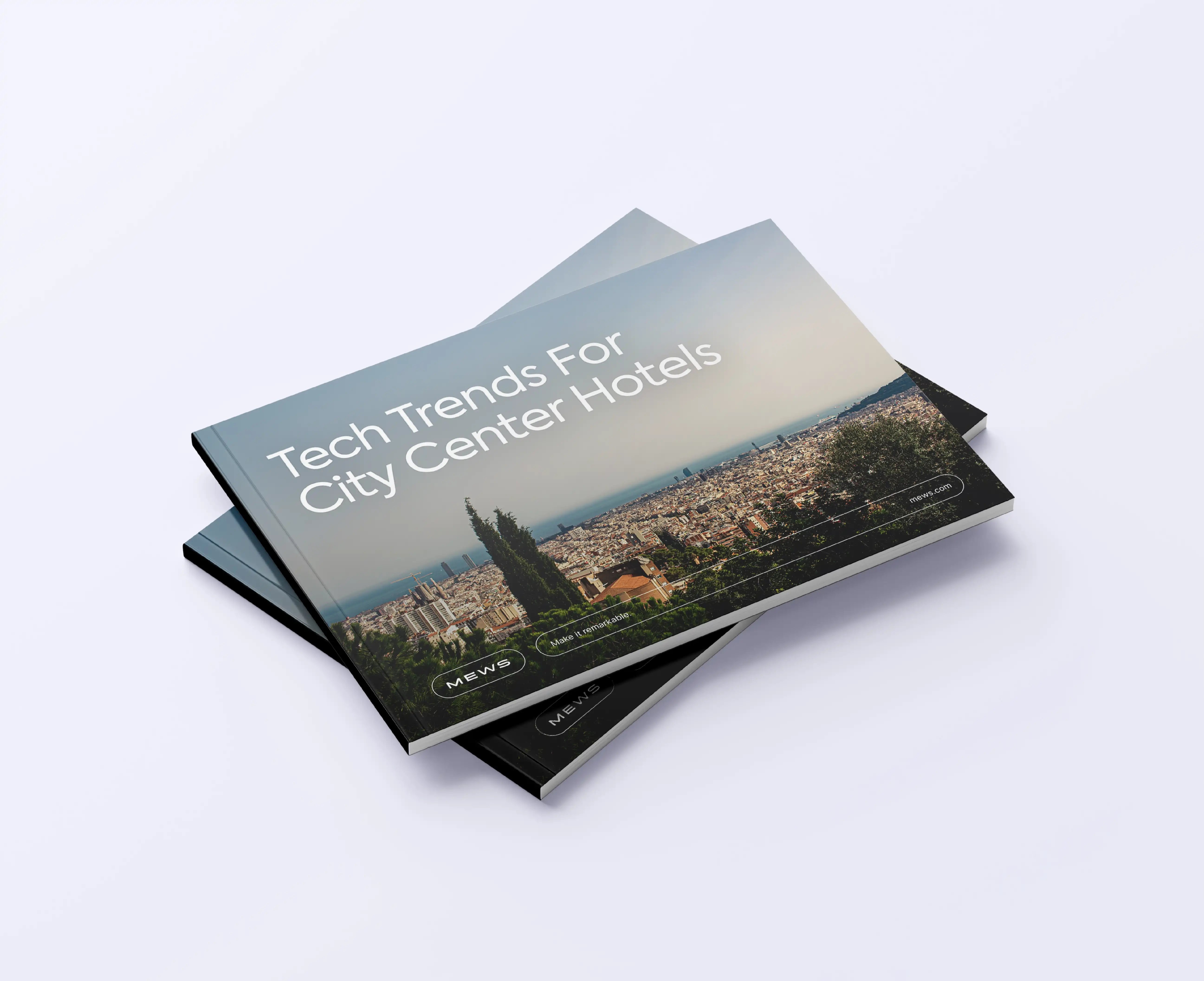Making your hotel interactive is a way of setting your property apart from the competition by providing one-of-a-kind experiences. Now that digital has become such a key part of our lives, it’s important that modern-day hoteliers redefine the hotel experience, shaping a customer journey that integrates digital technologies as much as possible to facilitate a streamlined 2.0 hotel stay.
In this article, we’ll discuss the top nine strategies to make an interactive hotel experience for guests so that your hotel can stand out. You can also discover more about this year’s hotel technology trends that are helping to revolutionize the hospitality industry.
Table of contents
How to create interactive hotel experiences
Creating strategies to make your hotel interactive is something that every hotelier should consider when defining the customer experience they want to offer. There’s no better way to generate a buzz about your hotel than by using state-of-the-art technologies that people want to share on social media and through word of mouth, helping to drive bookings. So let’s take a look at nine ways to create interactive hotel experiences.
Virtual concierge
One of the key features of interactivity is letting the guest be in command of their experience. How do you do this? With a virtual concierge, you can help guests to make changes to their room reservations, as well as make and change spa and restaurant reservations, among other services, easily from the web app on mobile, tablet and laptop. This frees up your front desk to take care of more advanced requests, like ensuring an optimal guest experience.
The virtual concierge is ideal when working in conjunction with your staff. Guests can request services such as transfers, tickets, room setup and tickets, directly through the app, but then at the end of the day it should be the concierge that coordinates and upsells services. In order to provide an optimal guest experience, there should be no underestimating the importance of human interaction.
Check-ins that were never easier
Interactivity can also translate to check-ins and check-outs. A tool like a check-in kiosk is ideal for guests to be able to check themselves in and out of the hotel. You’ll also increase guest satisfaction by getting rid of lines at the front desk. Furthermore, it shows that your hotel is embracing technology
Chatbots
Chatbots are another interesting way to leverage interactivity and make sure that your guests’ need for instant gratification in terms of responding to common queries and doubts are met in a timely manner. Chatbots are at the forefront of improving not only guest service, but also response times.
Powered by AI, chatbots can help your front desk handle the most common requests and when the chatbot doesn’t have the answer, transfer the matter to the appropriate staff member. It’s a great way to interactively accompany the guests throughout their hotel stay.
Interactive walls
What exactly is an interactive wall? It’s a great example of interactivity in the hospitality sector. These walls can take the form of interactive maps that highlight points of interest and attractions in different neighborhoods near where your hotel is located, as well as things to eat and drink. It’s also a great way to display a curated list of events or to promote services within your hotel.
They can also take the form of digital art that changes as the guests walk by or throughout the day. While interactive walls won’t fully replace the human interaction of your concierge staff, it can be a help support guests along their journey at your hotel.
Take advantage of the guests’ connectivity
Now, more than ever, people are constantly connected to their smart devices. They may be swiping through social media feeds, answering text messages or googling things to eat or drink. Hotels can now take advantage of their guests’ connectivity to provide a personalized and modern guest experience, while at the same time increasing engagement.
Take advantage of this connected guest by using your guest experience software to drive direct bookings with an integrated booking engine, offer online guest services such as check-ins and check-outs, and self-service kiosks. If your hotel has an app, use it to send push notifications about upcoming promotions or cross-sell spa treatments or restaurant bookings.
It’s all about mobile
Finding the way to incorporate mobile in your pre, during and post-trip phases is another way of increasing interactivity. Whether it's allowing guests to request services via text message during their stay or reserve via text message where you thereby send them to your direct booking engine, you can find a way to let the guest run the show.
The more in control the guest feels, the more you can convince them to do what you want them to do. For example, if your hotel has an app, you can reward them for downloading the app by giving promotions on upcoming stays or discounts on in-house treatments and extra services. It’s also a great way to interact with the guest after they’ve checked out.
Interactive dining
Your hotel restaurant’s dining doesn’t have to be a static experience. By providing interactive dining tables with projectors or touchscreen technology, guests can order what they want without even having to be attended to by a waiter. Sure, a waiter should be on hand in order to guide them through the use of the technology, but with this kind of dining table, you can put the experience in the hands of the guest. You may even contemplate having these digital tables active 24-7 and allow for food requests beyond restaurant operating hours; in this case you would just need to make sure you have a chef on duty to manage the requests.
Facial recognition
Facial recognition is not only a great way for guests to interact with your hotel, but it also takes the risk away of guests losing their keys. You can use facial recognition instead of room keys to let guests into their rooms or even use facial recognition to allow guests to check in at a check in kiosk. Facial recognition can also be a tool for your front desk to recognize VIP clients.
Smart hotel rooms
A smart hotel room is the most emblematic example of interactivity, leveraging technology to create a one-of-a-kind hotel experience. This can be implementing voice technology such as Alexa to control the room’s climate, lights or manage personalized greetings. It can also be setting up your app to enable guests to set their room preferences prior to arriving so that the guest finds everything they want when they get there.
You can even implement smart mirrors where guests can touch the surface to get information such as weather, news and other information. The ultimate goal of a smart room? Showing guests you care about the environment by using LEDS, optimizing utility use when hotel rooms are unoccupied, and saving electricity. Don’t forget to communicate this to your guests.
Conclusion
In this article we’ve discussed nine ways to create interactive hotel experiences for your guests, which range from interactive walls to facial recognition, dining, mobile technology, chatbots, virtual concierge, a check-in kiosk and more. The important thing is that no matter where you decide to incorporate interactivity into your guest experience, that it never replaces staff. Your human resources will ultimately trump technology in providing a top-notch experience.
Interactivity should be looked at with a holistic approach, seeing where technology can be used to improve processes, but only if it improves value and guest satisfaction. It goes without saying that the ultimate interactive hotel experience is the human experience as no technology can replace the level of service that humans can provide (at least not yet). That being said, leveraging interactive hotel experiences in the way that’s right for your hotel, can help you stand out from the competition, increase word of mouth while driving bookings and ensuring retention rates.
Looking for more ways to optimize your property using smart hotel tech?
Download our guide "Tech Trends for City Center Hotels"


2026 Hospitality Industry Outlook
Download now
Table of contents
Hospitality hot takes straight to your inbox



.webp)
